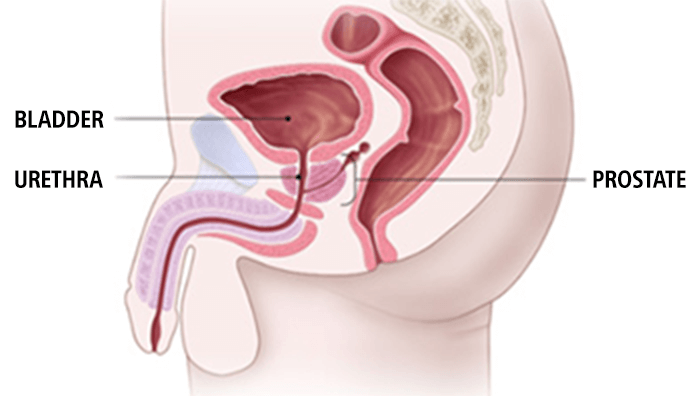Health Essentials
Safety like charity, begins at home

“The day is near at hand when the doctor will no longer be engaged to patch up the sick man, but to prevent him from getting sick. He will VISIT FAMILIES, EXAMINE THE PREMISES, inspect factories and shops and give instruction to his patients how to keep from getting sick…….”- 1908 article.
A very accurate prediction I must say as health and wellness continues to evolve.
Safety in our homes is an extremely important issue since preventable injuries and deaths continue to rise in homes and communities. To make a significant impact, we need to be aware of the hazards around us and change our behaviour. One little change at a time could lead to great results.
It is frightening to learn that in some countries, up to 70 per cent of all unintentional-injury deaths occur in the home or community. In plain language you are more likely to be injured at home than anywhere else. Each year thousands of people are off work for more than a week as a result of a fall at home, and this has a big effect on businesses and organisations.
The leading causes of unintentional injury in the home and community include:
1. Poisoning
2. Falls
3. Choking
4. Drowning
5. Fires/flames
WATCH THESE AREAS
• Kitchen and cooking areas
o A no-go area for children. Everyone working in the accident and emergency department of a hospital will tell you that on Saturdays and Sunday afternoons when most people do their weekly cooking, many children suffer from severe burns.
o Appropriate way of using the burners on a stove. Avoid handles of cooking pots facing your work area. The gas cylinder should be in a very well-ventilated area outdoors
o Care of spills. Clean them as soon as they occur to avoid slips.
• Electrical Appliances
o All appliances switched off after use and plug removed from socket
o Avoid touching of an electrical appliance with wet hands
o Electrical cords should be out of the way to avoid tripping people.
• Bathroom
o Children should never be left alone in a bathroom
o The use of mats in a bath especially for children and the elderly
o The elderly (above 65 years but could be younger depending on the health status) should use showers with support bars and stools instead of bathtubs.
• Other areas
o Avoid making a mess since they can cause one to trip sometimes with grave consequences. Children should be taught to pick up their toys after use.
o Adults should avoid drinking from bottles since children copy this habit and may harm themselves in the process. In our setting many children tend to drink kerosene stored in “soft” drink bottles. We then worsen the condition by forcing them to drink palm oil and inducing vomiting and often getting this concoction into their lungs. Who really “instituted” this criminal sentence?
o All medications, chemicals, small substances etc should be kept out of the reach of children
OTHER GENERAL STEPS TO AVOIDING HAZARDS
1. Look around for anything that may cause an accident. Make use of the different senses, sight, smell, hearing, touch. May not be a smart idea to try taste.
2. Decide who is most at risk. This helps you to make appropriate changes
3. Take preventive measures. After reading this piece make the changes necessary. Do not wait to “learn from experience” it may not always be wise to learn from the best teacher.
4. Keep a record of what you have changed
5. Continually check your living space – please do not think that making a one–time attempt is all that you need. Do this every day or every week.
COMMON CAUSES OF ACCIDENTS IN THE HOME
1. Poorly organised and cluttered walkway
2. Inadequate or unsuitable lighting
3. Moving or handling a load incorrectly – remember that waist or back pain?
4. Rushing around with careless abandon. Most of the time we end up losing time.
5. Tiredness. We commit errors when tired. Do not try to cheat nature, get some rest.
6. Lack of balance or appropriate mobility.
7. Poor eyesight and/or inappropriate corrective lenses.
8. Medication that may lead to dizziness. The elderly for instance who are on several medication have an increased risk of falling.
ECONOMIC COSTS OF ACCIDENTS AT HOME
The cost of home accidents is high in terms of the number of lives lost and resulting permanent disabilities. Several working days are lost, which translates into lost productivity. Huge sums of money may be lost seeking medical care and the quality of life is also poor.
The benefits of prevention of injuries at home are clear and quantifiable in terms of health and economic costs:
• Potential to save lives
• Improved quality of life
• Reduction in cost of hospital care
• Improved productivity through people’s contribution to the economy.
With all these benefits that we can chalk from keeping our home safe, one wonders why very little is heard about bringing safety home. Hopefully this will be the beginning of a nationwide drive.
Let us all pledge to “reduce the number of accidental deaths and injuries in our homes.” A home should be a place where we are absolutely SAFE.
AS ALWAYS LAUGH OFTEN, ENSURE HYGIENE, WALK AND PRAY EVERYDAY AND REMEMBER IT’S A PRICELESS GIFT TO KNOW YOUR NUMBERS (blood sugar, blood pressure, blood cholesterol, BMI)
Dr. Kojo Cobba Essel
Health Essentials Ltd (HE&W Group)
(dressel@healthessentialsgh. com)
*Dr Essel is a Medical Doctor with a keen interest in Lifestyle Medicine, He holds an MBA and is an ISSA Specialist in Exercise Therapy, Fitness Nutrition and Corrective Exercise. He is the author of the award-winning book, ‘Unravelling The Essentials of Health & Wealth.’
Thought for the week – “Whatever you practice GROWS STRONGER! What are you practicing?”
References:
1. www.nsc.org (national safety council)
2. www.homesafety.co.nz
3. www.injuryobservatory.net
4. www.webmd.com
By Dr. Kojo Cobba Essel
Health Essentials
The Prostate Has Found Its Voice

The prostate gland, a small but essential organ found only in men, plays a key role in reproductive health. It produces fluid that nourishes, protects, and transports sperm, yet many focus only on its connection to prostate cancer.
Location & Function
- Situated between the bladder and penis, with the rectum behind it.
- The urethra passes through the prostate, carrying urine and semen.
Common Prostate Conditions
1. Prostatitis – Infection of the prostate:
- Symptoms: chills, fever, pus-like urethral discharge, painful urination, groin/testicular pain, painful orgasms, erectile dysfunction.
- Advice: Seek professional help; do not self-medicate.
2. Benign Prostatic Hyperplasia (BPH) – Non-cancerous enlargement of the prostate:
- Symptoms: frequent urination (especially at night), urge incontinence, difficulty starting urination, weak stream, painful urination, blood in urine, terminal dribbling, and in severe cases, inability to urinate.
- BPH can be extremely painful, sometimes compared to labor pains.
3. Prostate Cancer – Common among men, especially black men, often aggressive and with earlier onset:
- Risk Factors: older age, African descent, family history, obesity.
- Symptoms: frequent urination, straining, blood in urine/semen, weak urine flow, new erectile dysfunction; advanced stages may include fatigue, weight loss, and bone pain.
Diagnosis
- Digital rectal examination – checks for irregular or hard areas.
- PSA test, biopsy, ultrasound, CT/MRI/PET scans, bone scan.
Management
- Holistic approaches include watchful waiting, medication, surgery, and radiation (external & brachytherapy).
- Always discuss all options with your healthcare provider.
Risk Reduction Tips
- Regular screening
- Healthy, varied diet rich in fruits and vegetables (carrots, tomatoes, broccoli, kale, cauliflower)
- Maintain a healthy weight
- Exercise at least 5 days a week
Final Advice
- Share this information – the prostate needs support!
- Maintain good hygiene, walk and exercise daily, pray, and know your numbers (blood sugar, blood pressure, cholesterol, BMI).
Thought for the Week:
“There is no magic formula to being happy but making a conscious effort to be happy goes a long way.” – Dr. Kojo Cobba Essel
Dr. Essel invites readers to the La Palm Royal Beach Hotel Wellness Festival on Saturday, November 29, 2025, at 6 a.m., to walk, exercise, network, and share ideas to stay healthy.
Contact: dressel@healthessentialsgh.com
By Dr. Kojo Cobba Essel
Join our WhatsApp Channel now!
https://whatsapp.com/channel/0029VbBElzjInlqHhl1aTU27
Health Essentials
Stop the silent killer: Breaking myths to prevent sudden deaths from high blood pressure

Every week in Ghana, a life is cut short, sometimes in the middle of traffic, sometimes at a desk, sometimes in the quiet of sleep. A father doesn’t come home. A sister doesn’t wake up.
A colleague slumps at work and never gets back up. Families are left asking why and you will hear statements like what happened? Was he sick? I just saw him, he has not shown signs of ailment, what a shock and so on.
Behind many of these sudden tragedies is a quiet, invisible force: high blood pressure, or hypertension. It doesn’t scream for attention. It doesn’t always show symptoms. But it tightens its grip silently on hearts, on brains, on lives.
This is not just a medical issue. It is a human one, it is about behaviour, it is about ignorance and it is about lifestyle. It is the grandmother who never got her blood pressure checked because she felt “fine.”
It is the taxi driver, the statistician, the nurse who ignored his pounding headaches, thinking it was just stress. It is the young lady who was so vibrant at church and no one suspected she could fall and die. Because it shows no symptoms.
The alarming numbers we cannot ignore
The Ghana’s 2023 STEPS Survey on Non-Communicable Diseases conducted by The World Health Organisation, Ghana Health Service and Ghana Statistical Service has revealed findings that should push for action.
According to the report, 21.7 per cent of adults aged 18 to 69 in Ghana are living with high blood pressure. Even more alarming is that 51.1 per cent of those with hypertension are not aware of their condition.
This means that more than half of the people with dangerously high blood pressure are walking around without knowing it until tragedy strikes. That is the real danger of this silent killer.
Literature has shown that hypertension is preventable and manageable. But only if we treat it like the threat, it is. That means regular checkups; that means understanding the risks and that means talking about it openly, urgently, and with compassion.
The deadly power of myths
Why are so many Ghanaians untested or untreated? Is it out of ignorance, or the pervasive myths about hypertension and its treatment?
• Some believe blood pressure medicine “weakens the body” or “shortens life.”
• Some believe blood pressure medicine “weakens the penis and kills sexual drive”
• Others think once you start taking medication, you are “dependent for life.”
• Many say, “I feel fine, so I must be fine.”
These beliefs are not only false, but they are also deadly. The truth, according to the World Health Organisation, is that effective treatment can reduce the risk of stroke by up to 40 per cent and heart attack by 25 per cent. Avoiding treatment does not prevent dependence rather, it accelerates death.
As Dr Patrick Kuma-Aboagye, former Director-General of the Ghana Health Service, has noted, “Hypertension is preventable and treatable, but our biggest battle is misinformation and late detection.”
A national conversation we must have
This is not just a health issue it is a national emergency. Sudden deaths rob families of breadwinners, communities of leaders, and the country of its productivity. In every obituary notice caused by hypertension, there is a story of loss that could have been prevented with a simple blood pressure check and treatment.
Behind every life saved is a moment of awareness, a decision to act, therefore, the media must rise to the challenge.
Radio and television programmes should dedicate regular airtime to demystify hypertension. Newspapers should carry survivor stories, expert interviews, and practical lifestyle advice.
Social media influencers should spread awareness in local languages, reaching young people who assume they are safe.
Public health experts also have a responsibility. Screening must move beyond hospitals into churches, mosques, markets, schools, and workplaces. People should not have to wait for illness to know their BP status.
What we can do together
To stop the silent killer, we need a collective response:
• Check your blood pressure regularly, even if you feel healthy.
• Follow medical advice faithfully if diagnosed because treatment saves lives.
• For healthy lifestyle, eat less salt, reduce alcohol, reduce starchy, fat and oil intake, avoid smoking, and exercise at least 30 minutes daily.
• Encourage one another talk about blood pressure in families, communities, and workplaces.
Conclusion: Silence is killing us
What kills is not just the disease, but the silence, fear, and myths that surround it. The STEPS 2023 report has sounded the alarm: nearly one in five Ghanaian adults has high blood pressure, and more than half don’t even know it.
This is the time for bold conversation, public education, and decisive action. The media, health professionals, policymakers, and ordinary citizens must join forces to expose the myths, spread the facts, and save lives. Let us not wait for another headline.
Let us make blood pressure a national conversation before it becomes a personal tragedy. With awareness, treatment, and collective will, Ghana can stop the silence and stop the sudden deaths from the silent killer.
Written by: Ansah Moses Teye-Akam – Senior Statistician, Sociologist/Scientific Research Organisational Expert.
Email: moses.ansah@ statsghana.gov.gh/ansahmosesteyeakam@ gmail.com.gh Contact: 0244539034 / 0204359034
Join our WhatsApp Channel now!
https://whatsapp.com/channel/0029VbBElzjInlqHhl1aTU27






